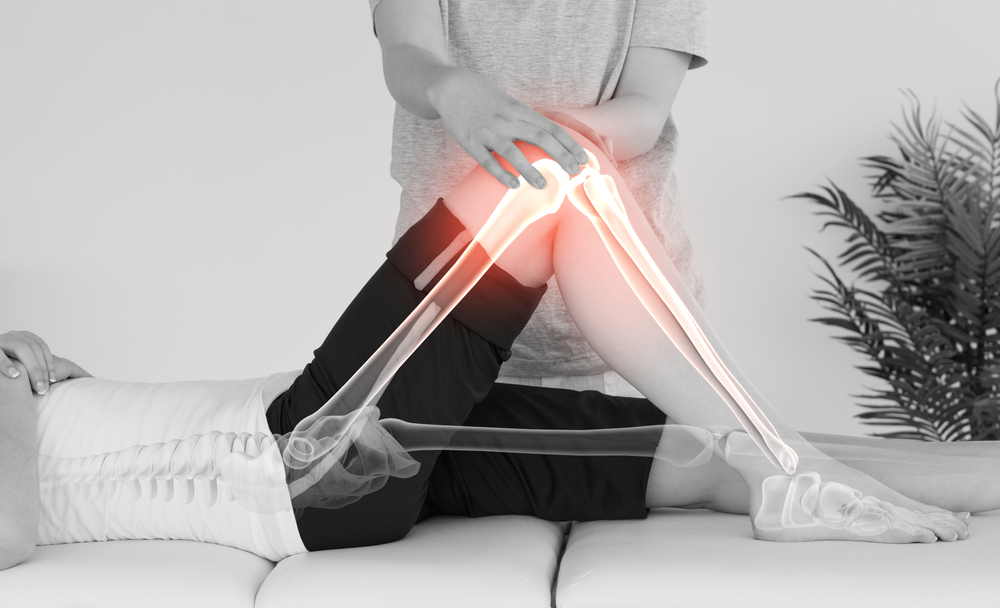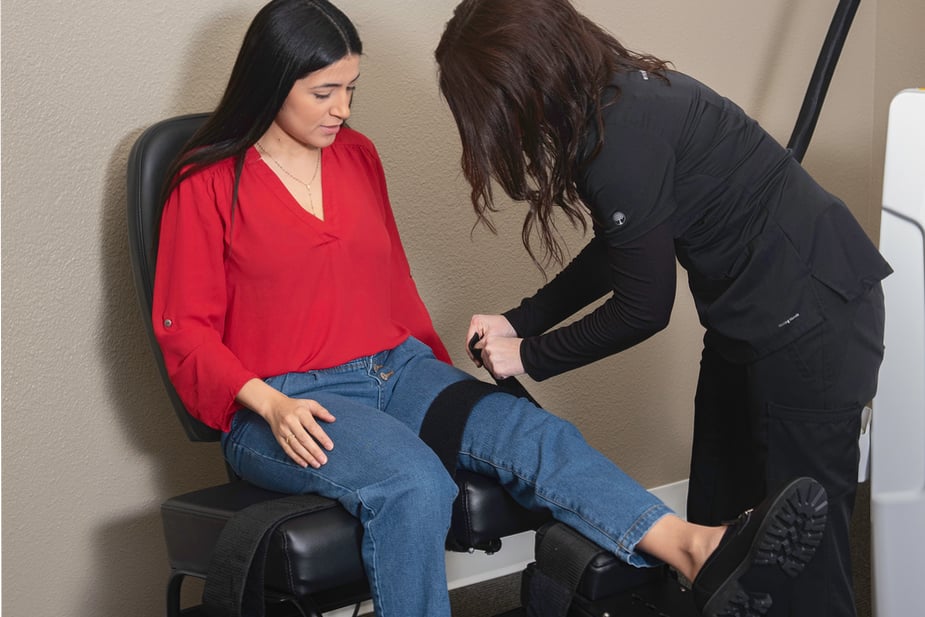Can a Meniscus Tear be Treated by a Chiropractor?
3 min read

There are many different types of issues that can cause you pain and discomfort in your knees. One of the most common types of knee injury is a meniscal tear. Before we dive too deeply into this topic, you should know a little bit more about the meniscus.
The meniscus is a C-shaped piece of cartilage located in the knee to help cushion shock between the shin bone and the thigh bone. It’s responsible for allowing your knees to absorb wear and tear when you walk or run. A meniscus tear can be lateral, on the side of the knee, or medial, in the center of the knee.
While the meniscus is a durable part of your body, sometimes a simple knee twist can cause a tear in the cartilage. When this happens, you may feel pain, discomfort, and swelling in the joint.
Knowing the Symptoms of a Meniscal Tear
Knowing the early warning signs of a meniscus tear may help you avoid surgery. Some of the most common symptoms of a meniscus tear are:
- Difficulty moving the knee
- Swelling in the knee and surrounding tissue
- A joint that gets locked in a specific position
- A popping sound or feeling at the time of injury
- A clicking or popping sound when you go from sitting to standing or doing squats
- Pain in your knee joint that can become stronger when moving
- Instability when you’re walking or standing
It’s not too hard to diagnose the tear with a physical exam. Some images might also be needed to see the extent of the tear. While it’s true that a meniscus tear can heal on its own, a chiropractor can offer some relief when it comes to the knee pain and discomfort.
The Causes of Meniscus Tears
There are two basic types of meniscus tears. These are traumatic injuries and degenerative injuries.
- Traumatic meniscus tears are the result of physical trauma to the joint and cartilage. This type of injury can happen to people of any age but is more prevalent in athletes, especially those who participate in sports that involve a lot of running and movement, such as basketball, football, soccer, or track and field.
- Degenerative meniscus tears are caused by the routine wear and tear of the joint and are more often seen in people over the age of 30. Additionally, a meniscus that is weakened by age is more likely to get injured. Athletes over 30 years of age are especially prone to this injury. Studies show that over 40% of individuals over the age of 65 have a meniscus tear.
Treating Your Meniscus Tear When Surgery Isn’t Necessary
Sometimes people know the exact moment that they caused the injury. However, degenerative meniscus tears are caused by the long-term wear and tear on a joint, and you may notice an increase in discomfort over time.
For meniscus tears that aren’t too severe, surgery isn’t needed. But a chiropractor can help you once you’ve had time to rest the knee to get your range of motion back. Common non-surgical meniscus tear treatments include:
- Rest - One of the most common treatments for minor meniscus tears is simply resting. If your injury has occurred to the outer third of the meniscus, it is considered a red zone. This means that this part of the cartilage gets a good blood supply, and your body may be able to naturally heal the injury by just reducing the work on the meniscus.
- RICE - If you're an active athlete, you've probably heard of the RICE technique. This acronym stands for Rest, Ice, Compression, and Elevation. While we've already covered the "rest" portion, don’t leave out the ICE by applying ice packs to the injured area. Keep placing it on the knee for 15-20 minutes every 3-4 hours to help reduce swelling. You can also use a compression bandage to help reduce swelling to the joint. Finally, elevating the injured knee while sitting or laying down can reduce the swelling. Less swelling will make it easier to move the knee.
- OTC (Over the Counter) Medications - You may find that using anti-inflammatory medications, such as ibuprofen or naproxen, can reduce pain and swelling.
Chiropractic Treatment: Cold laser treatments are a chiropractic treatment option for meniscus tears. It’s a non-invasive, painless treatment that directs a cold laser to the knee area. It is called cold laser therapy because the laser is only used at low intensity and never heats up the body. It works to bring more blood to the area of the injury for faster healing of the tear.
Talk to Our Chiropractors About Your Knee Pain
Don’t let knee pain keep bothering you. If you’ve got pain but don’t know what it is, talk with our chiropractors about it. They can work with you to diagnose and treat the pain. We can also help you prevent future knee injuries. Request an appointment at our office in The Woodlands or Cypress.
More from Our Blog on This Topic
7 min read
5 min read




